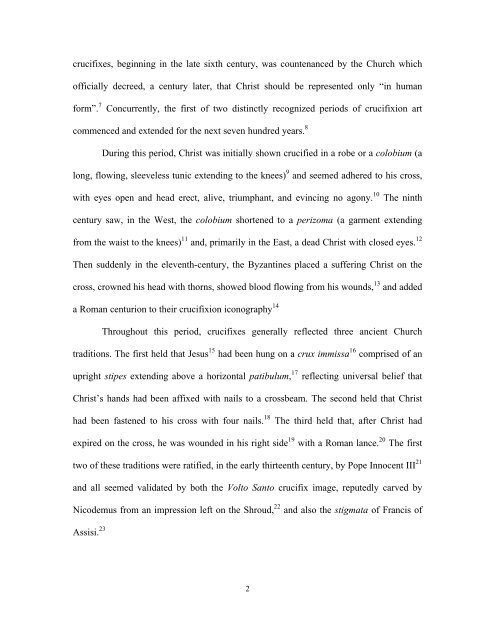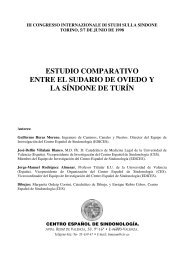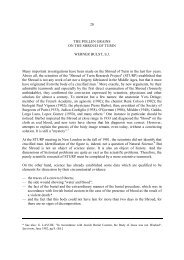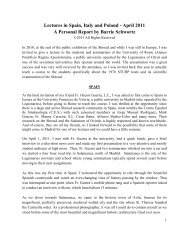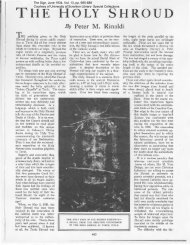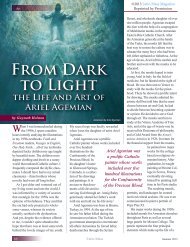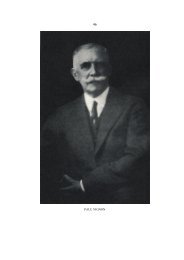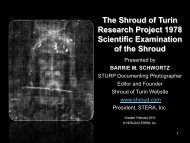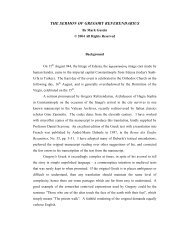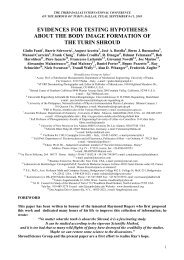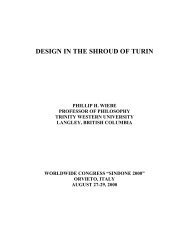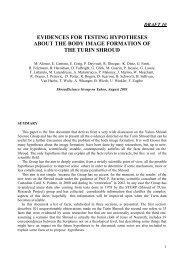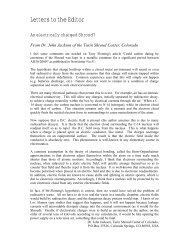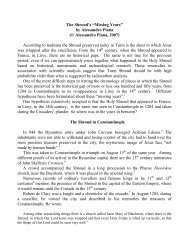the cathar crucifix - The Shroud of Turin
the cathar crucifix - The Shroud of Turin
the cathar crucifix - The Shroud of Turin
Create successful ePaper yourself
Turn your PDF publications into a flip-book with our unique Google optimized e-Paper software.
<strong>crucifix</strong>es, beginning in <strong>the</strong> late sixth century, was countenanced by <strong>the</strong> Church which<br />
<strong>of</strong>ficially decreed, a century later, that Christ should be represented only “in human<br />
form”. 7 Concurrently, <strong>the</strong> first <strong>of</strong> two distinctly recognized periods <strong>of</strong> <strong>crucifix</strong>ion art<br />
commenced and extended for <strong>the</strong> next seven hundred years. 8<br />
During this period, Christ was initially shown crucified in a robe or a colobium (a<br />
long, flowing, sleeveless tunic extending to <strong>the</strong> knees) 9 and seemed adhered to his cross,<br />
with eyes open and head erect, alive, triumphant, and evincing no agony. 10 <strong>The</strong> ninth<br />
century saw, in <strong>the</strong> West, <strong>the</strong> colobium shortened to a perizoma (a garment extending<br />
from <strong>the</strong> waist to <strong>the</strong> knees) 11 and, primarily in <strong>the</strong> East, a dead Christ with closed eyes. 12<br />
<strong>The</strong>n suddenly in <strong>the</strong> eleventh-century, <strong>the</strong> Byzantines placed a suffering Christ on <strong>the</strong><br />
cross, crowned his head with thorns, showed blood flowing from his wounds, 13 and added<br />
a Roman centurion to <strong>the</strong>ir <strong>crucifix</strong>ion iconography 14<br />
Throughout this period, <strong>crucifix</strong>es generally reflected three ancient Church<br />
traditions. <strong>The</strong> first held that Jesus 15 had been hung on a crux immissa 16 comprised <strong>of</strong> an<br />
upright stipes extending above a horizontal patibulum, 17 reflecting universal belief that<br />
Christ’s hands had been affixed with nails to a crossbeam. <strong>The</strong> second held that Christ<br />
had been fastened to his cross with four nails. 18 <strong>The</strong> third held that, after Christ had<br />
expired on <strong>the</strong> cross, he was wounded in his right side 19 with a Roman lance. 20 <strong>The</strong> first<br />
two <strong>of</strong> <strong>the</strong>se traditions were ratified, in <strong>the</strong> early thirteenth century, by Pope Innocent III 21<br />
and all seemed validated by both <strong>the</strong> Volto Santo <strong>crucifix</strong> image, reputedly carved by<br />
Nicodemus from an impression left on <strong>the</strong> <strong>Shroud</strong>, 22 and also <strong>the</strong> stigmata <strong>of</strong> Francis <strong>of</strong><br />
Assisi. 23<br />
2


